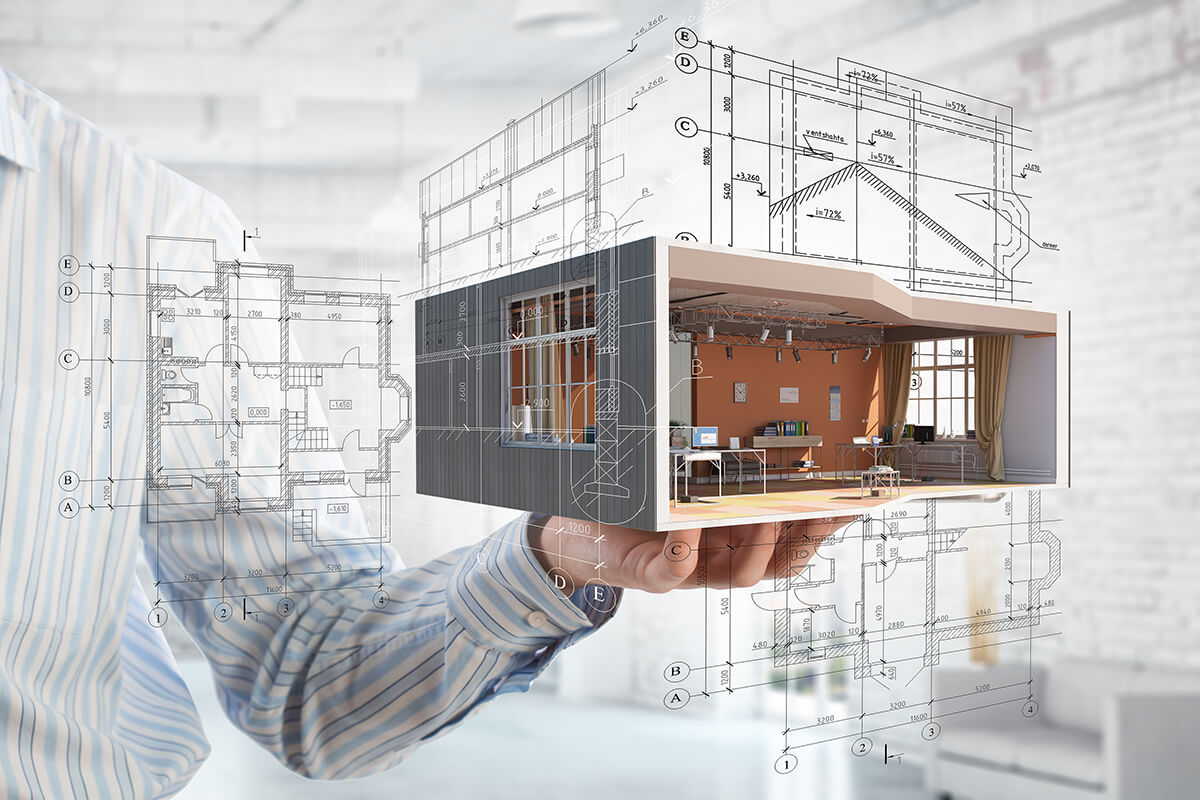Architect Guide to Eco-Friendly Building Materials
Architect Guide to Eco-Friendly Building Materials
Blog Article
The Role of Sustainability and Innovation in Modern Architect Practices
Sustainability and innovation are reshaping contemporary design in means you might not anticipate. By accepting clever developments and green materials, engineers are not simply developing buildings; they're crafting settings that boost our high quality of life.
The Significance of Lasting Architecture
Lasting style is vital not just for the atmosphere however likewise for boosting our quality of life. When you accept lasting style, you're not just reducing your carbon impact; you're developing spaces that promote health and wellness.
In addition, sustainable style frequently brings about stronger areas. When structures are created with eco-friendly techniques, they can inspire others to adhere to match, promoting a culture of sustainability. You'll notice raised property worths and a better feeling of pride in your surroundings.
Last but not least, by prioritizing sustainability, you're investing in the future. You're ensuring that future generations enjoy a much healthier planet and lively areas. So, when you consider your next project, assume about how sustainable design can boost your life and those around you.
Cutting-edge Materials Transforming Structure Practices
As you explore innovative materials in architecture, you'll locate that eco-friendly construction products are improving exactly how we assume about sustainability. Recycled material advancements are giving brand-new life to waste, while smart product modern technologies improve developing performance. These advancements not only advertise eco-friendliness however additionally press the limits of design.
Naturally Degradable Building Products
While typical construction materials frequently add to ecological degradation, biodegradable building and construction materials are emerging as a feasible choice that transforms structure practices. You can check out alternatives like mycelium, hempcrete, and bamboo, which not just minimize waste however also advertise sustainability. These products break down naturally at the end of their lifecycle, reducing land fill contributions. By including biodegradable alternatives right into your designs, you're not just improving aesthetic allure; you're additionally making a positive effect on the earth. Plus, they commonly require much less power to create, even more reducing your project's carbon footprint. As you adapt to these ingenious materials, you'll find that they supply resilience and convenience, allowing you to produce structures that line up with contemporary worths of sustainability and obligation.
Recycled Content Developments
In recent times, innovative materials with high recycled content have actually revolutionized structure techniques, providing engineers exciting new options - Architect. You can currently integrate materials like recycled steel, which not just reduces waste however likewise boasts outstanding stamina. Recycled glass is an additional superb option, providing aesthetic allure while minimizing ecological effect

Smart Material Technologies
Smart material innovations are reshaping the way you assume regarding building techniques, using vibrant remedies that adjust to altering conditions. These innovative materials, such as self-healing concrete and thermochromic glass, enhance building efficiency and sustainability. When harmed-- these developments are no longer simply ideas, envision frameworks that can adjust to temperature adjustments or fix themselves. By incorporating wise materials, you can produce energy-efficient layouts that reply to their environment, decreasing general power intake. The capability to keep an eye on and adapt in real-time streamlines maintenance and extends the lifespan of structures. As you welcome these technologies, you're not just innovating; you're adding to an extra sustainable future in architecture, combining functionality with ecological responsibility.
The Integration of Smart Technologies in Design
As technology evolves, incorporating clever services right into architectural design becomes crucial for producing sustainable and effective areas. You can integrate wise modern technologies like developing management systems, which optimize energy usage and boost owner comfort. Sensing units can check environmental conditions, changing illumination and temperature level instantly based upon real-time data. This flexibility not only enhances individual experience however also lowers energy consumption.
Including Web of Points (IoT) tools permits for smooth communication amongst numerous structure systems, enabling you to make data-driven decisions that enhance capability. Smart materials that reply to ecological adjustments can further enhance your style, supplying vibrant remedies to ever-changing problems.
Energy Efficiency and Renewable Energy Solutions
While lots of designers concentrate on looks, focusing on power performance and eco-friendly power remedies is important for sustainable design. You can start by incorporating passive solar style, which enhances natural light and warm, decreasing reliance on synthetic illumination and heating systems. Use high-performance insulation and energy-efficient home windows to lessen power loss.
Don't forget about renewable resource systems-- install photovoltaic panels or wind generators to produce clean energy on-site. You can additionally take into consideration including geothermal home heating and cooling systems for a more lasting temperature level guideline.
By choosing energy-efficient appliances and lighting, you'll not just minimize energy intake yet likewise lower functional expenses for building occupants.
Including these concepts into your styles not only profits the environment yet likewise enhances the structure's charm and value. Inevitably, your commitment to power effectiveness and renewable power will establish your jobs apart in an open market.
Water Preservation Techniques in Modern Architecture
Integrating water conservation approaches into visit homepage modern-day design is necessary for creating lasting structures that reduce ecological effect. You can achieve this by incorporating rainwater harvesting systems, which accumulate and keep rainfall for irrigation and non-potable usages. Carrying out low-flow fixtures and clever watering systems likewise decreases water consumption, ensuring efficient use throughout the building.
Take into consideration using drought-resistant landscape design, which requires much less water and advertises biodiversity. Incorporating absorptive paving products allows rain to infiltrate the ground, reducing drainage and recharging groundwater supplies.
Furthermore, mounting greywater recycling systems can repurpose water from sinks and showers for toilet flushing or irrigation, additional preserving sources.
The Impact of Biophilic Design on Well-Being
Biophilic style brings nature inside your home, and you'll observe its positive impacts on your health and happiness. By enhancing indoor air top quality and attaching you with natural environments, these rooms can transform your daily experience. Allow's discover exactly how integrating these attributes can improve your overall health.
Nature's Impact on Health
When you integrate components of nature into your surroundings, it can considerably boost your mental and physical wellness. Biophilic design, which highlights natural light, plants, and natural products, fosters a feeling of link to the outdoors. Embracing biophilic design is a step toward a healthier way of living.
Enhancing Indoor Air Quality
While numerous individuals concentrate on aesthetic appeals and functionality in layout, enhancing interior air quality plays a necessary function in your total wellness. By integrating biophilic layout elements, you can enhance air high quality normally. Focusing on these facets in your design will certainly not only elevate your room however additionally advertise a sense of calm and wellness.
Connection With All-natural Components
When you get in touch with natural environments in your space, you not just enhance its aesthetic charm yet also considerably boost your well-being. Biophilic layout urges you to integrate features like plants, all-natural light, and organic products. These aspects create a calming ambience, reducing tension and stress and anxiety. Study shows that being around nature can enhance your mood and cognitive feature, helping you really feel extra efficient and focused. When you invite the outdoors inside, you could see better air top quality and raised comfort. Basic changes, like including a living wall or large home windows, can profoundly impact your experience (Architect). Inevitably, integrating nature into your atmosphere leads you to a healthier, better lifestyle, promoting a much deeper connection to the globe around you.
Future Fads in Lasting Architectural Practices
As the globe encounters pushing ecological obstacles, engineers are significantly welcoming innovative approaches to sustainability that redefine just how we style and develop. You'll see a surge in biophilic design, integrating nature right into urban areas to boost health and reduce energy consumption. Smart innovations, like AI and IoT, Read Full Report are improving power monitoring in buildings, enhancing resource usage, and minimizing waste.
In addition, modular building is acquiring traction, enabling much faster, much more efficient structure procedures while decreasing environmental effect. Using lasting materials, such as reclaimed wood and recycled metals, is becoming conventional technique. As you discover these patterns, expect a change towards round style, stressing the lifecycle of products and promoting reuse and recycling.
These forward-thinking methods not just address ecological worries yet additionally develop much healthier, extra resistant areas. By staying educated regarding these trends, you can assist shape a sustainable future in architecture.
Often Asked Concerns
How Can Sustainability Affect Task Budget Plans and costs?
Sustainability can considerably influence job prices and budget plans. You might locate that initial investments in eco-friendly materials or innovations bring about long-term cost savings via power effectiveness, reduced waste, and potential government rewards, ultimately stabilizing the general expenditures.
What Accreditations Exist for Sustainable Design?
You'll locate several certifications for lasting architecture, including LEED, BREEAM, and the Living Building Challenge. These accreditations aid you demonstrate your dedication to sustainability and can boost your task's reputation and interest clients.
How Does Regional Society Influence Sustainable Layout?
Regional society shapes sustainable layout by mirroring community materials, customs, and values. You'll find that integrating local aesthetics and practices not just respects heritage however likewise improves the functionality and acceptance of your building projects.
What Duty Does Client Education Play in Lasting Practices?
Client education's vital for advertising lasting techniques. When you educate clients about benefits, costs, and ecological effects, you equip them to make informed choices, cultivating a collaborative method that enhances the job's overall sustainability.

Just How Can Architects Gauge the Success of Sustainability Campaigns?
You can gauge the success of sustainability initiatives by tracking energy consumption, examining product performance, and celebration feedback from customers. Routine audits and contrasts against standards will certainly aid you fine-tune your approaches and showcase improvements effectively.
By integrating clever products, you can develop energy-efficient layouts that respond to their atmosphere, decreasing general power consumption.While lots of designers concentrate on looks, prioritizing power effectiveness and renewable go to the website power solutions is essential for lasting style. Biophilic layout, which highlights natural light, plants, and organic materials, fosters a sense of connection to the outdoors. Biophilic style motivates you to incorporate functions like plants, all-natural light, and natural materials. As you explore these patterns, expect a shift towards circular design, emphasizing the lifecycle of products and promoting reuse and recycling.
Report this page